Universal design concepts can and should be more and more frequently encountered in the museum sector. This is the case of dropped kerbs or ramps as an alternative to stairs to help people with physical impairment to access the different levels of the museum building, from the entrance in the edifice to the ease of access inside the building. Although most buildings have stairs to access from one floor to another, there are also fortunate cases in which architects thought from the very beginning of designing accessible features so to be as inclusive and friendly to users as possible. One such example is the integration of slopes into the interior design of the Kiasma Museum of Helsinki, in order to ensure access from one storey to another for visitors in wheelchairs but not only of course. See photo below, taken inside the Kiasma Museum in November 2023, illustrating the application of the seventh UD principle, size and space for approach and use.
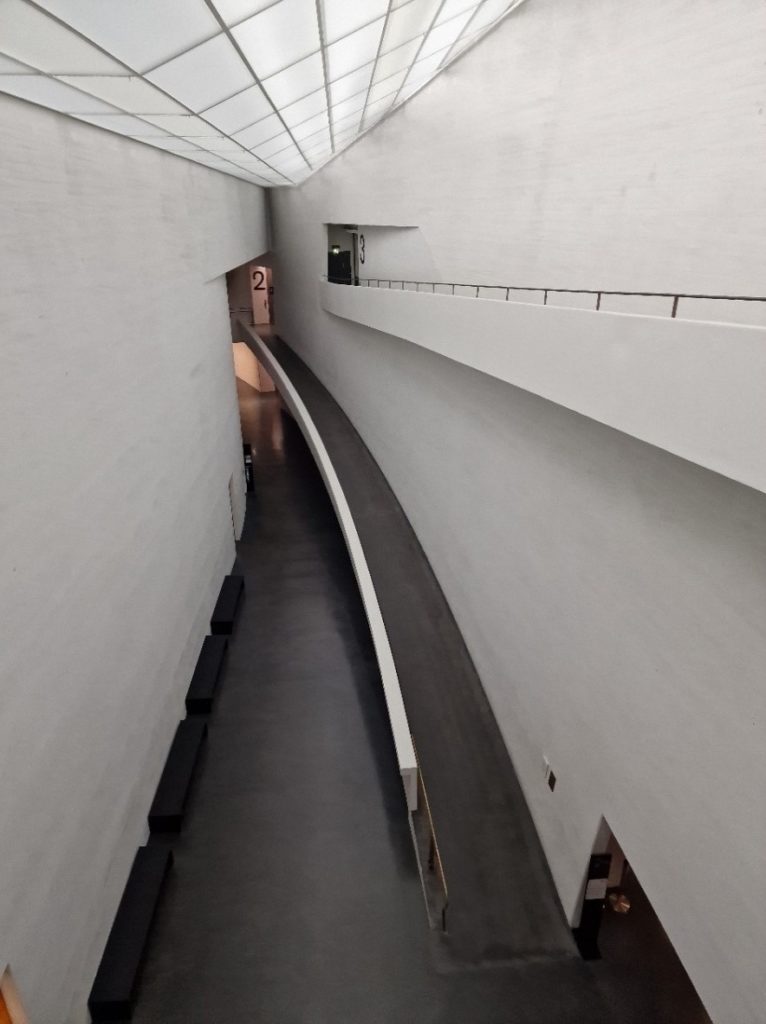
Kiasma Museum, Helsinki, November 2023
In their turn, the presence of elevators/escalators wherever possible ensures the application of the sixth UD principle – low physical effort. Irrespectively if the visit is done by a large group, such as a teacher with a whole class, for whom walking throughout the museum instead of taking the elevator to reach from one storey to another might be somehow disturbing, or by persons using wheelchairs due to their suffering from mobility issues, or simply by persons who are interested in culture but for whom too much walking or too much standing might cause comfort issues, elevators are always very appreciated in museum buildings, particularly in large ones, where the visit of the entire collection may take several hours. Below is a photo of the elevator of the Futurium Berlin, large enough to fit a school group. Comparable elevators in terms of size and addressability are, for instance, also found at Istanbul Modern.
.
Futurium, Berlin.
Photo source: Schnepp Renou; via Tepper, apud
SCRE_000318818_send.jpg (750×1000) (architizer.com)
Automatic doors can also be considered illustrative of the sixth UD principle, low physical effort, as thanks to the integration of sensors, users are not required to apply any stress when passing from one room to another within a museum building, or even separating the interior of the building from the exterior.

Automated door connected to the sloped floor at the Kiasma Museum, Helsinki, November 2023
Specific Adaptation approaches: to every specific need an adaptation
Navigating walkways for the visually impaired can be considered illustrative for the fourth UD principle, perceptible information. In this regard, as an example of good practice, mention should be made of the exhibition Berlin Global, within the Humboldt Forum in Berlin, where throughout the entire exhibition space visually impaired persons can follow the walkways designed particularly for them, with stations here and there where the walking stick can be placed, where other senses such as the smell can be used to enhance the visit, along with the information provided in the traditional Braille system.

Berlin Global exhibition, within Humboldt Forum, Berlin, February 2024

Berlin Global exhibition, within Humboldt Forum, Berlin, February 2024
Slot for the walking stick, labels in Braille, sensorial experience with various smells of the city.
The hearing impaired persons should have access to the exhibition information by means of sign language explanations, this being another illustration of the fourth UD principle, perceptible information. Pending on the specificity of each exhibition design, on the availability of technical means for the smooth integration of displays with the sign language information in each room or unit of the exhibition space, museum need to curate their content also for persons with this type of special requirements.

Sign language explanation integrated in the exhibition panels at the Musée du Quay Branly, Paris, March 2024
Appropriate signage needs therefore to be designed for all visitors, including visually impaired, hearing impaired, people with cognitive disorders, etc.
Explanations in simple language for people with cognitive difficulties at the
Musée du Quay Branly, Paris.
Signage for the visually impaired explaining the height level of the museum building compared to the surroundings (the Seine and the Eiffel Tower) above and layout of the floor plans at the Musée de l’Homme, Paris, September 2023
Another adaptation needed in a museum context refers to children.
It is common knowledge that a child’s attention cannot be kept too long on serious topics and that he/she needs to be involved in practical, hands-on activities rather than in theoretical explanations. Therefore, it is preferable that museums include in their visiting circuit stations where children can perform such actions, that will not only contribute to their level of satisfaction but will also have a role in the long-term understanding of the functioning principle of a certain device or in remembering a specific scientific detail which otherwise could pass unobserved. This way museums will apply the third UD principle, simple and intuitive use.
Visitor-friendly exhibit, with areas designed for interaction

Children testing the weight of an amphora, History Museum of Catalunya, Barcelona, July 2022
Benefits of universal design for accessibility and inclusivity of museums and culture:
- More satisfied and empowered visitors

Visitor testing creative digital accessibility at Futurium, Berlin, July 2022
- Better informed society

Usage of a digital table at the Berlinische Galerie, July 2022
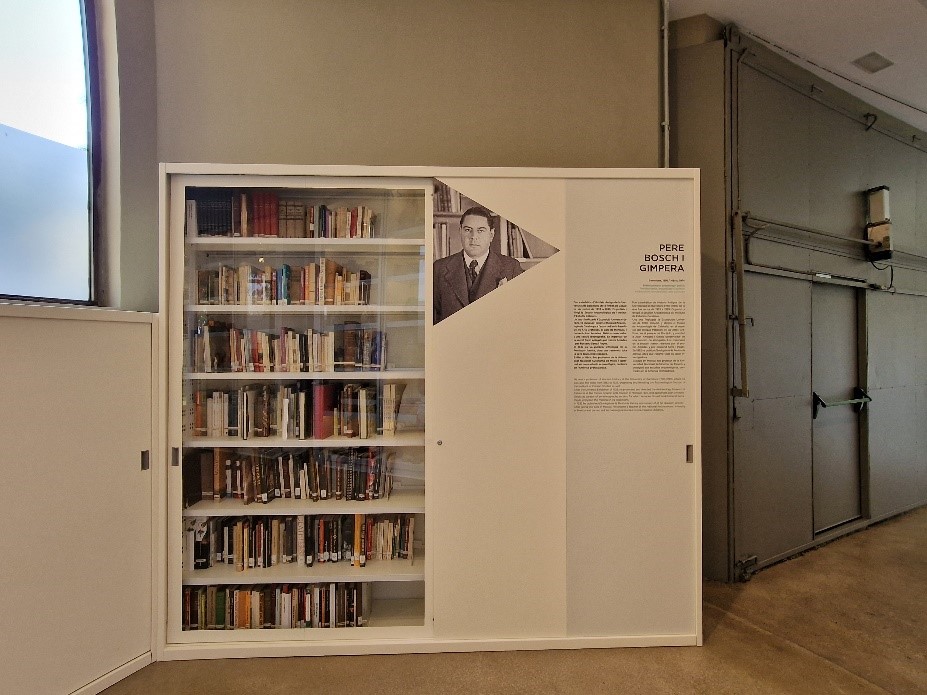
Visitable storage at the Ethnographic Museum of Barcelona, July 2022
- Increased outreach, better engagement of museum audience
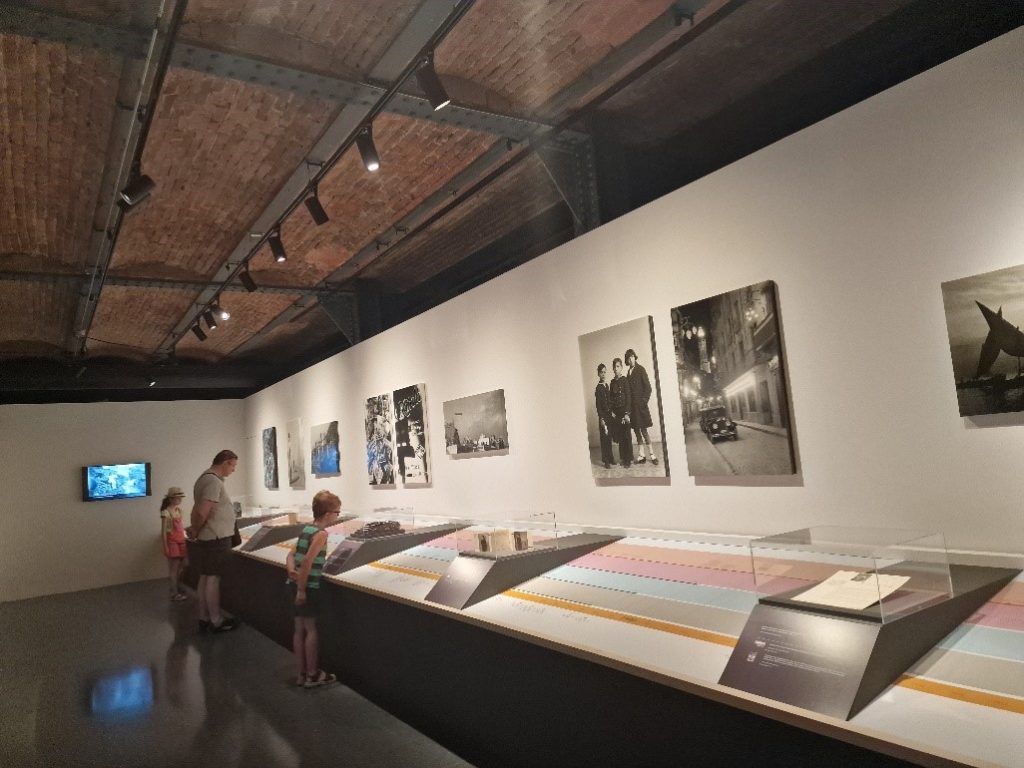
Family visit at the History Museum of Catalunya, July 2022
- Better interaction with the target groups

Experimenting with light and reflection of various objects at the History Museum of Catalunya, July 2022
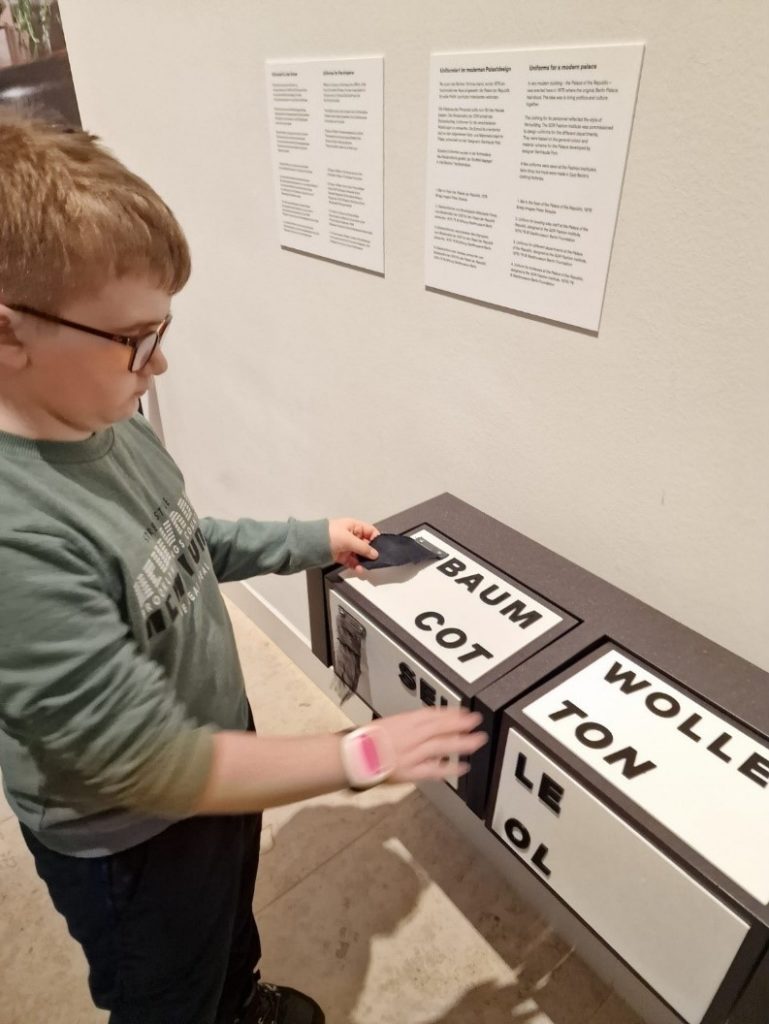
Getting the feel of various textiles and recreating the puzzled word at the Berlin Global exhibition, Humboldt Forum, Berlin, February 2024

Experimenting with exhibits at the Ethnographic Museum of Barcelona, July 2022
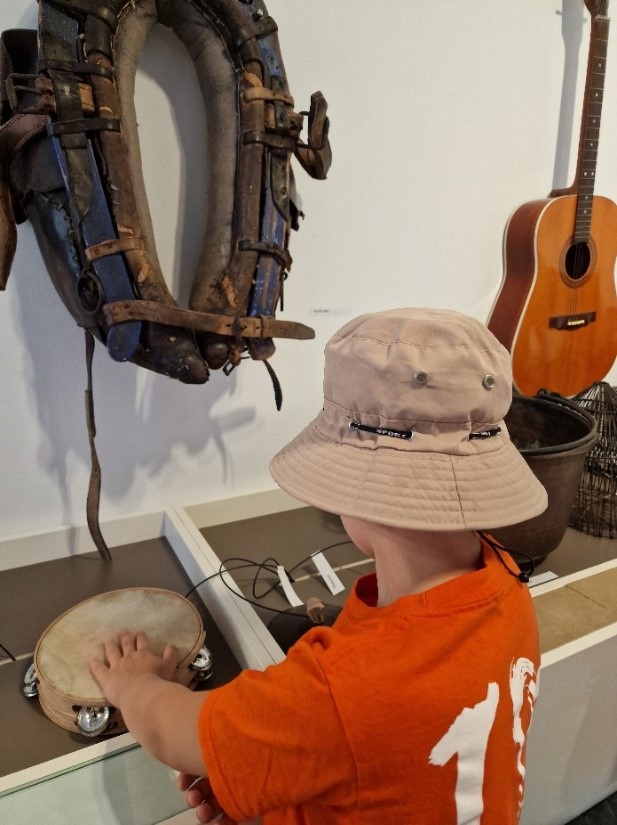
- Enlarged museum community

Description available as text, Braille, and QR code at the Berlinische Galerie, July 2022

QR code discovery of the collections of Centre Pompidou, Paris, September 2023
- More contact with community members
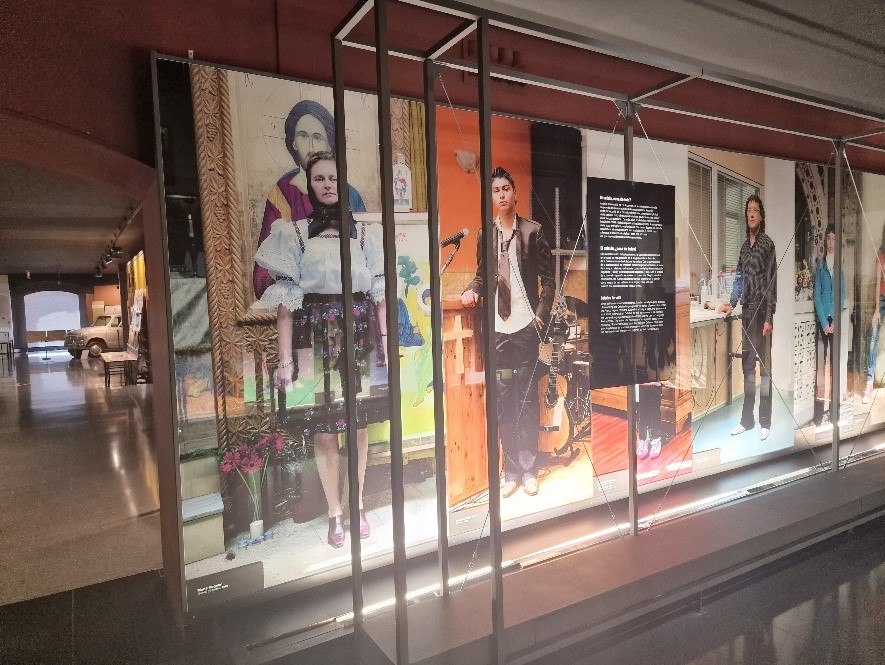
Immigrants in the city of Barcelona, whose number came to change the population structure throughout the last decades. Image taken at the History Museum of Catalunya, Barcelona, July 2022
